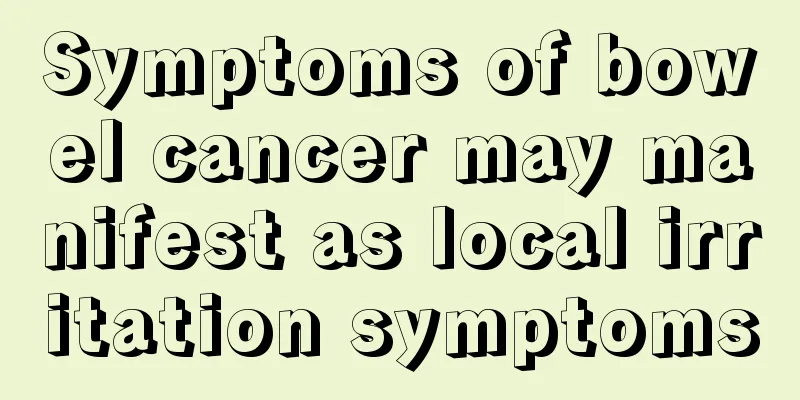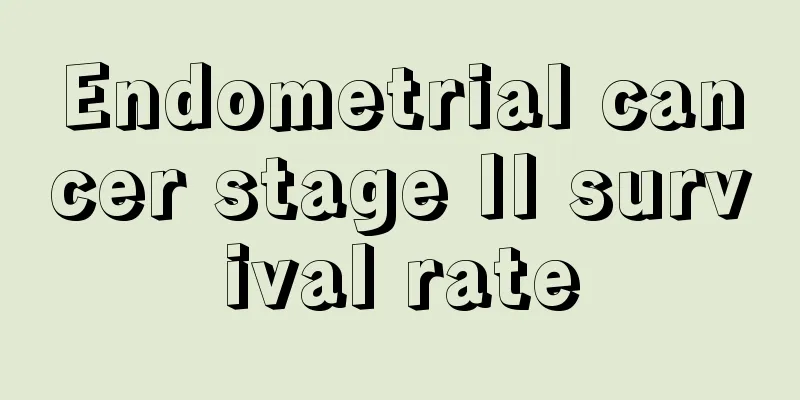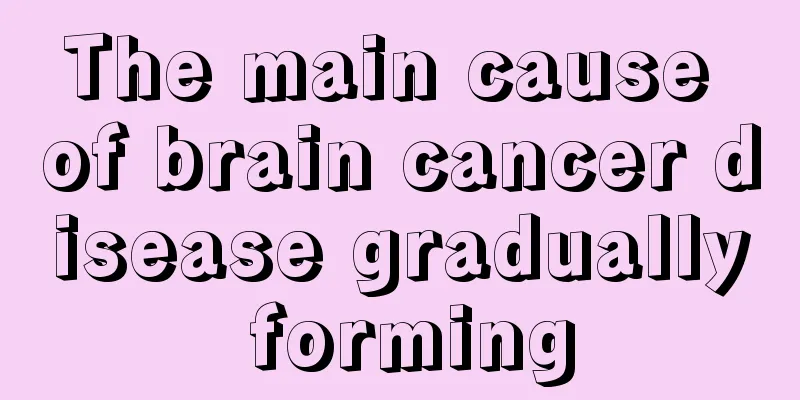What is the treatment for lung cancer? The most comprehensive summary of lung cancer treatment methods

|
Science is developing and the times are progressing. With the development of medicine, many lung cancer patients have been cured, so lung cancer is no longer an incurable disease. Lung cancer patients should maintain a positive attitude, cooperate with the doctor's treatment, and not lose confidence or have a broken jar mentality. Come and learn about the relevant knowledge. What are the treatments for lung cancer? 1. Chemotherapy Chemotherapy is the main treatment for lung cancer, and more than 90% of lung cancers require chemotherapy. The efficacy of chemotherapy for small cell lung cancer is relatively certain regardless of early or late stages, and even about 1% of early small cell lung cancers are cured by chemotherapy. Chemotherapy is also the main means of treating non-small cell lung cancer, and the tumor remission rate of chemotherapy for non-small cell lung cancer is 40% to 50%. Chemotherapy generally cannot cure non-small cell lung cancer, but can only prolong the patient's survival and improve the quality of life. Chemotherapy is divided into therapeutic chemotherapy and adjuvant chemotherapy. Chemotherapy requires the use of different chemotherapy drugs and different chemotherapy regimens according to the different histological types of lung cancer. In addition to killing tumor cells, chemotherapy also damages normal cells in the human body, so chemotherapy needs to be carried out under the guidance of an oncologist. In recent years, the role of chemotherapy in lung cancer is no longer limited to patients with advanced lung cancer who cannot undergo surgery, but is often included in the comprehensive treatment plan for lung cancer as a systemic treatment. Chemotherapy inhibits the bone marrow hematopoietic system, mainly the decrease of white blood cells and platelets, and granulocyte colony stimulating factor and platelet stimulating factor can be used for treatment. Chemotherapy is divided into therapeutic chemotherapy and adjuvant chemotherapy. 2. Radiotherapy 1. Treatment principles Radiotherapy is most effective for small cell lung cancer, followed by squamous cell carcinoma, and the worst for adenocarcinoma. The radiation field for lung cancer radiotherapy should include the primary lesion and the mediastinum of lymph node metastasis. At the same time, it should be supplemented with drug therapy. Squamous cell carcinoma is moderately sensitive to radiation, the lesions are mainly local invasion, and the metastasis is relatively slow, so radical treatment is often used. Adenocarcinoma is less sensitive to radiation and is prone to blood metastasis, so simple radiotherapy is rarely used. Radiotherapy is a local treatment that often requires combined chemotherapy. The combination of radiotherapy and chemotherapy can be used in a synchronous chemoradiotherapy or alternating chemoradiotherapy method depending on the patient's condition. 2. Complications of radiotherapy The complications of radiotherapy for lung cancer include radiation pneumonitis, radiation esophagitis, radiation pulmonary fibrosis and radiation myelitis. The above radiotherapy-related complications are positively correlated with the radiotherapy dose, and there are also individual differences. 3. Surgical treatment of lung cancer Surgery is the first and main treatment for lung cancer, and it is also the only treatment that can cure lung cancer. The purpose of surgical treatment for lung cancer is: Completely remove the primary lesion of lung cancer and metastatic lymph nodes to achieve clinical cure; Removing the vast majority of the tumor to create favorable conditions for other treatments is called cytoreductive surgery; 1. Indications for surgery Surgical treatment of lung cancer is mainly suitable for early and middle stage (stage I-II) lung cancer, stage IIIa lung cancer and some selective stage IIIb lung cancer where the tumor is confined to one side of the chest cavity. (1) Stage I and II lung cancer; (2) Stage IIIa non-small cell lung cancer; (3) Partial stage IIIb non-small cell lung cancer with lesions limited to one side of the chest cavity that can be completely removed; 2. Contraindications to surgery (1) Stage IV lung cancer with extensive metastasis (2) Accompanied by multiple groups of fused mediastinal lymph node metastases, especially invasive mediastinal lymph node metastases; (3) Stage IIIb lung cancer with contralateral hilar or mediastinal lymph node metastasis; (4) Patients with severe visceral dysfunction who cannot tolerate surgical operation; (5) Those who suffer from bleeding diseases that cannot be corrected. 3. Choice of surgical procedure for lung cancer The principle of surgical resection is to completely remove the primary lesion and the lymph nodes in the chest that may have metastasized, and to preserve normal lung tissue as much as possible. Pneumonectomy should be performed with caution. (1) Lung wedge and local resection refers to the removal of wedge-shaped cancerous masses and partial lung segment resection. It is mainly suitable for early-stage lung cancer with small volume, elderly and weak body, poor lung function or well-differentiated cancer and low malignancy; (2) Segmentectomy is the resection of an anatomical lung segment. It is mainly suitable for the elderly with poor cardiopulmonary function and isolated early-stage peripheral lung cancer, or partial central lung cancer with localized lesions located at the root of the lung cancer. (3) Lobectomy Lobectomy is suitable for peripheral and partial central lung cancers that are confined to one lobe. For central lung cancers, it is necessary to ensure that there is no residual cancer in the bronchial stump. If lung cancer involves two lobes or the middle bronchus, upper middle lobe or lower middle lobe bilobectomy can be performed; (4) Bronchial sleeve lobectomy: This procedure is mainly suitable for central lung cancer with lung cancer located in the opening of the lobar bronchus or bronchus intermedia. The advantage of this procedure is that it can achieve complete resection of lung cancer while preserving healthy lung tissue. (5) Bronchopulmonary artery sleeve lobectomy This procedure is mainly suitable for central lung cancer where the lung cancer is located at the opening of the lobar bronchus or the intermediate bronchus and the lung cancer also invades the pulmonary artery trunk. In addition to bronchial resection and reconstruction, the surgery also requires resection and reconstruction of the pulmonary artery trunk. The advantage of this procedure is that it can achieve complete resection of the lung cancer while preserving healthy lung tissue; (6) Carina resection and reconstruction: When the tumor exceeds the main bronchus and involves the carina or tracheal side wall but does not exceed 2 cm, carina resection and reconstruction or sleeve pneumonectomy can be performed. If one lobe of the lung can be retained, efforts should be made to retain the lobe through carina resection and reconstruction. (7) Pneumonectomy Pneumonectomy refers to the removal of the entire lung on one side, that is, the right or left side. It is mainly suitable for lung cancer with good cardiopulmonary function, extensive lesions, and young age, who are not suitable for lobectomy or sleeve lobectomy. The morbidity and mortality of pneumonectomy are high, and the long-term survival rate and quality of life of patients are not as good as those of lobectomy, so the indications for surgery must be strictly controlled. |
>>: What are the late symptoms of liver cancer? 8 late symptoms of liver cancer
Recommend
What is the traditional open surgery for thyroid cancer
Traditional open surgery for thyroid cancer gener...
What are the causes of prostate cancer?
Prostate cancer mainly occurs in middle-aged and ...
What is deionized water
Speaking of deionized water, I believe many peopl...
How to remove oil stains from white clothes
We all know that white clothes stained with oil w...
What to drink is good for your eyes? Drink more of these teas
The eyes play a very important role. When there i...
Maintaining a good attitude helps patients with recurrent bladder cancer effectively control their condition
Most cancer patients have a psychological fear of...
Is uterine cancer hereditary?
Inheritance, will endometrial cancer occur in pat...
How to enhance immunity? Eat foods rich in vitamin C regularly
Immunity is very important for each of us. If the...
What is carbohydrate antigen ca125 used to diagnose? What is the normal value of carbohydrate antigen ca125?
When some women go to the gynecology department f...
Is it good to drink crucian carp soup every day
Crucian carp soup is very nutritious. First of al...
Bartholin's gland cyst
When it comes to Bartholin's gland cyst, perh...
Is nasopharyngeal carcinoma contagious?
Is nasopharyngeal carcinoma contagious? Nasophary...
What foods can cure fibroids quickly
What foods can cure fibroids quickly? When fibroi...
What are the typical symptoms of neurological tinnitus
Neurogenic tinnitus is a relatively common type o...
Symptoms of lobular lung cancer
Symptoms of lobular lung cancer? Lobular pneumoni...









